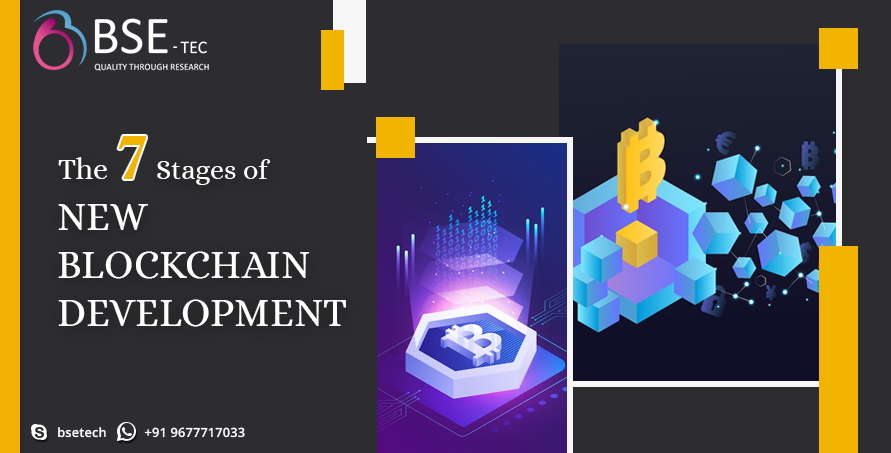The 7 Stages of New Blockchain Development

The development of a new blockchain typically goes through several stages, from conceptualization to implementation. While the specific steps may vary depending on the project and the team involved, here are seven common stages of new blockchain development:
- Ideation and Conceptualization
This stage involves brainstorming and ideation to conceptualize the blockchain project. The team defines the problem they aim to solve, explores potential use cases, and formulates the basic features and requirements of the blockchain also mainly they analyze if the project is feasible or not! Later all the steps are taken to bring the project into tangible form.
- Requirement Gathering and Design
In this stage, the project team collects detailed requirements by conducting market research, analyzing user needs, and defining the scope of the blockchain project. The team also designs the overall architecture and technical specifications, including consensus, data structures, and security measures.
Additional Criteria To Consider
- New or Existing Blockchain
When developing a blockchain app, one of the crucial decisions is whether to use a new or existing blockchain. An existing blockchain offers a proven infrastructure and community support, ensuring stability and security. However, a new blockchain provides the freedom to customize features and tailor them to specific requirements.
- Public, Private or Permissioned
The next consideration is the type of blockchain: public, private, or permissioned. Public blockchains, like Ethereum, offer decentralized networks accessible to anyone, providing transparency but sacrificing privacy. Private blockchains restrict access to selected participants, ensuring privacy but limiting decentralization. Permissioned blockchains strike a balance by allowing selected participants while maintaining transparency and privacy.
- Choosing the Consensus Mechanism
Selecting the consensus mechanism is equally important. Proof of Work (PoW) is secure but resource-intensive. Proof of Stake (PoS) consumes less energy but requires participants to hold a stake. There are many consensus mechanisms out there, it is important to do your research which suits your project better!
- Prototyping and Proof of Concept
The development team creates a prototype or proof of concept (PoC) to validate the feasibility and functionality of the proposed blockchain. The PoC helps to identify technical challenges and potential improvements early on, allowing for adjustments to the design and requirements if necessary.
- Development and Testing
The actual development of the blockchain starts in this stage. The team implements the planned features and functionalities, such as smart contracts, transaction processing, consensus algorithms, and user interfaces. Testing is integral to this stage to identify and fix any bugs, security vulnerabilities, or performance issues.
- Deployment and Network Setup
Once the development and testing are complete, the blockchain is deployed to a production environment. The network infrastructure is set up, including nodes, wallets, and network connections. Initial configurations and security measures are implemented, and the blockchain network is launched.
- Iterative Enhancements
After the initial deployment, the team continues to refine and enhance the blockchain based on user feedback, market demands, and technological advancements. This stage involves iterative development cycles, where new features and improvements are added to the blockchain through regular updates and upgrades.
- Community Building and Adoption
The final stage focuses on building a community around the blockchain project and driving its adoption. This involves marketing, outreach efforts, partnerships, developer support, and education initiatives. The team works to attract users, businesses, and developers to join and contribute to the blockchain ecosystem.
It’s important to note that blockchain development is an iterative and ongoing process. Even after the initial release and community-building stages, the development team continues to maintain and upgrade the blockchain to ensure its security, scalability, and relevance in a rapidly evolving landscape. Get in touch with a blockchain development company to develop your dream blockchain project. Contact BSEtec for a free blockchain consultation.
Did you find this article useful? Let us know by leaving a comment below, or join us on Twitter and Facebook.




